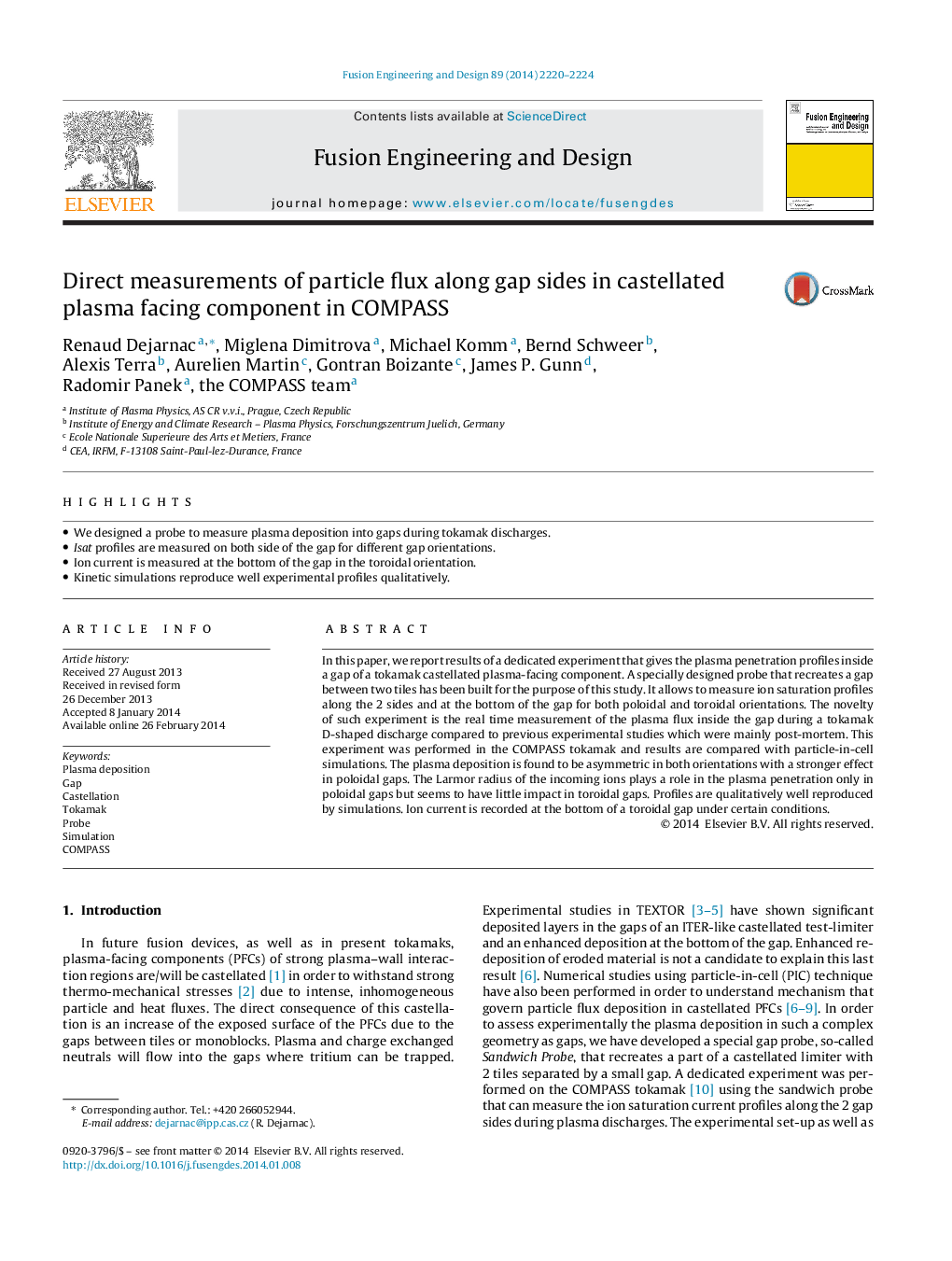| Article ID | Journal | Published Year | Pages | File Type |
|---|---|---|---|---|
| 271539 | Fusion Engineering and Design | 2014 | 5 Pages |
•We designed a probe to measure plasma deposition into gaps during tokamak discharges.•Isat profiles are measured on both side of the gap for different gap orientations.•Ion current is measured at the bottom of the gap in the toroidal orientation.•Kinetic simulations reproduce well experimental profiles qualitatively.
In this paper, we report results of a dedicated experiment that gives the plasma penetration profiles inside a gap of a tokamak castellated plasma-facing component. A specially designed probe that recreates a gap between two tiles has been built for the purpose of this study. It allows to measure ion saturation profiles along the 2 sides and at the bottom of the gap for both poloidal and toroidal orientations. The novelty of such experiment is the real time measurement of the plasma flux inside the gap during a tokamak D-shaped discharge compared to previous experimental studies which were mainly post-mortem. This experiment was performed in the COMPASS tokamak and results are compared with particle-in-cell simulations. The plasma deposition is found to be asymmetric in both orientations with a stronger effect in poloidal gaps. The Larmor radius of the incoming ions plays a role in the plasma penetration only in poloidal gaps but seems to have little impact in toroidal gaps. Profiles are qualitatively well reproduced by simulations. Ion current is recorded at the bottom of a toroidal gap under certain conditions.
